| Compact car; Built in USA |
|
|
| Good condition price range: $1,000 – $2,100* |
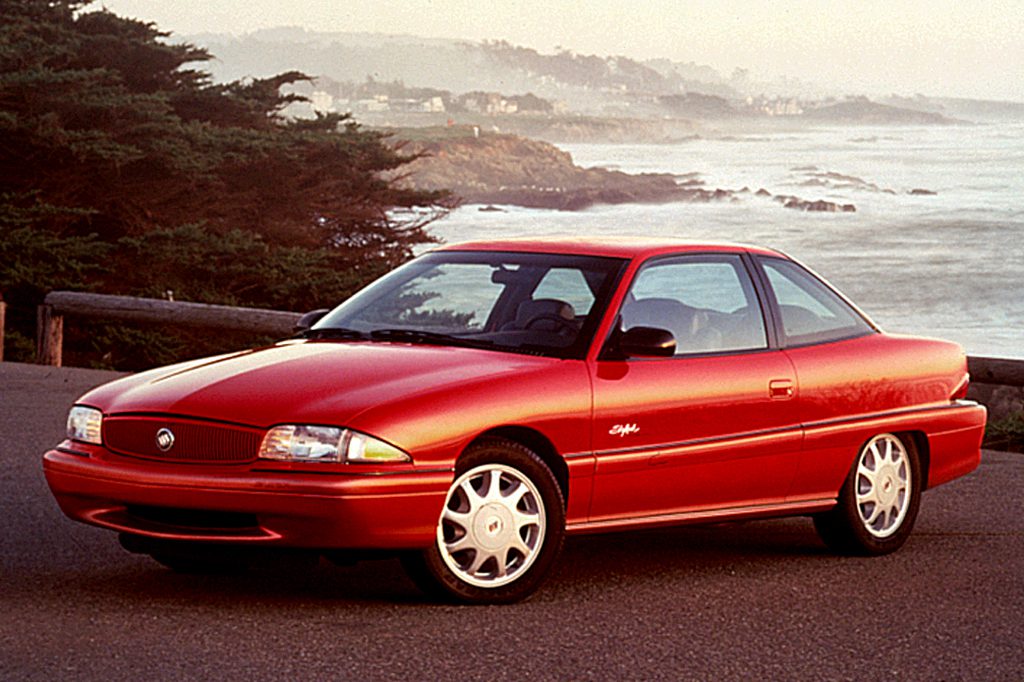
1996 Buick Skylark GS 2-door coupe
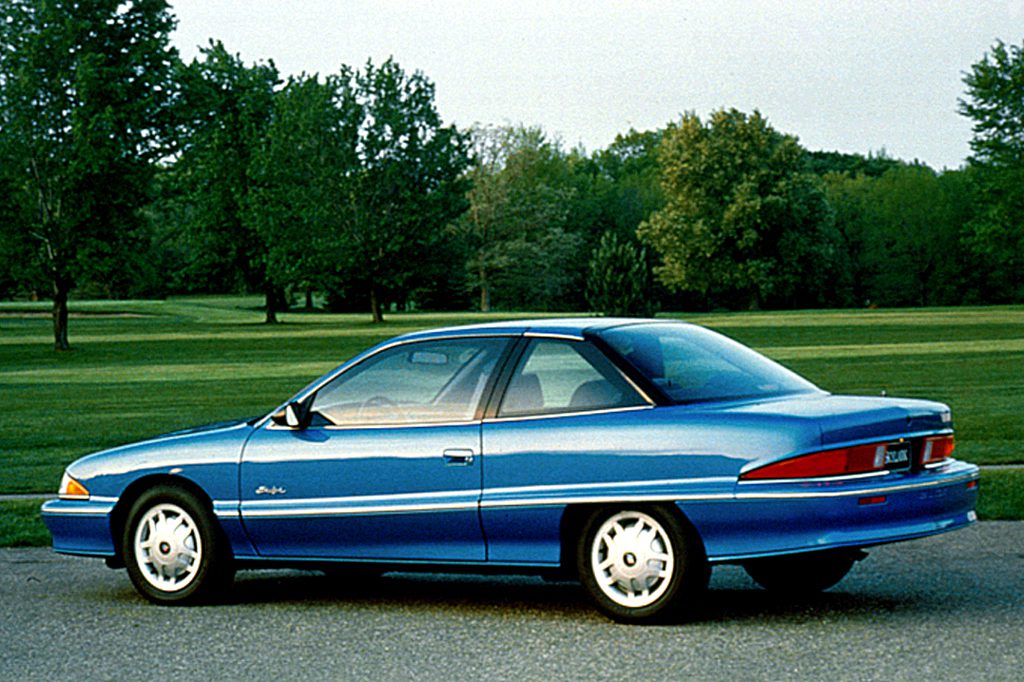
1992 Buick Skylark 2-door coupe
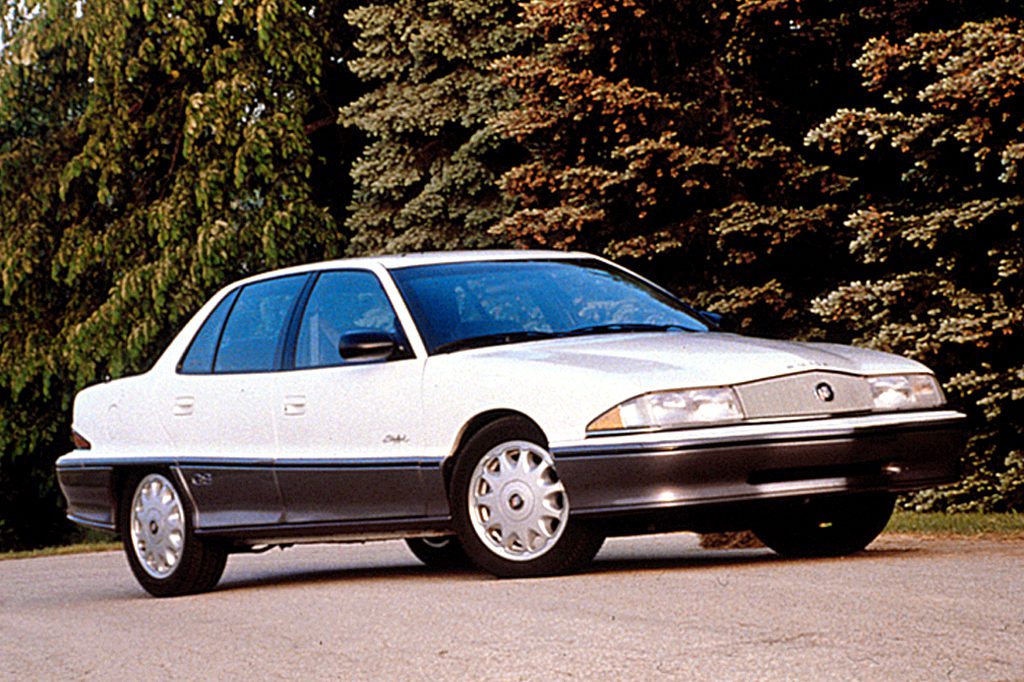
1993 Buick Skylark Gran Sport 4-door sedan
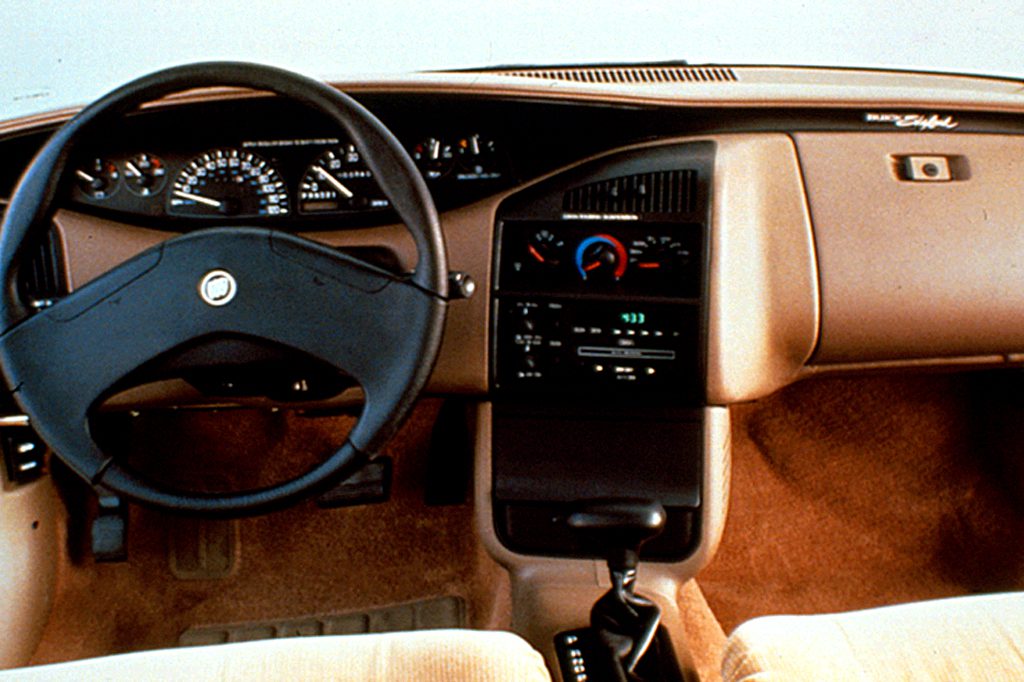
1992 Buick Skylark interior
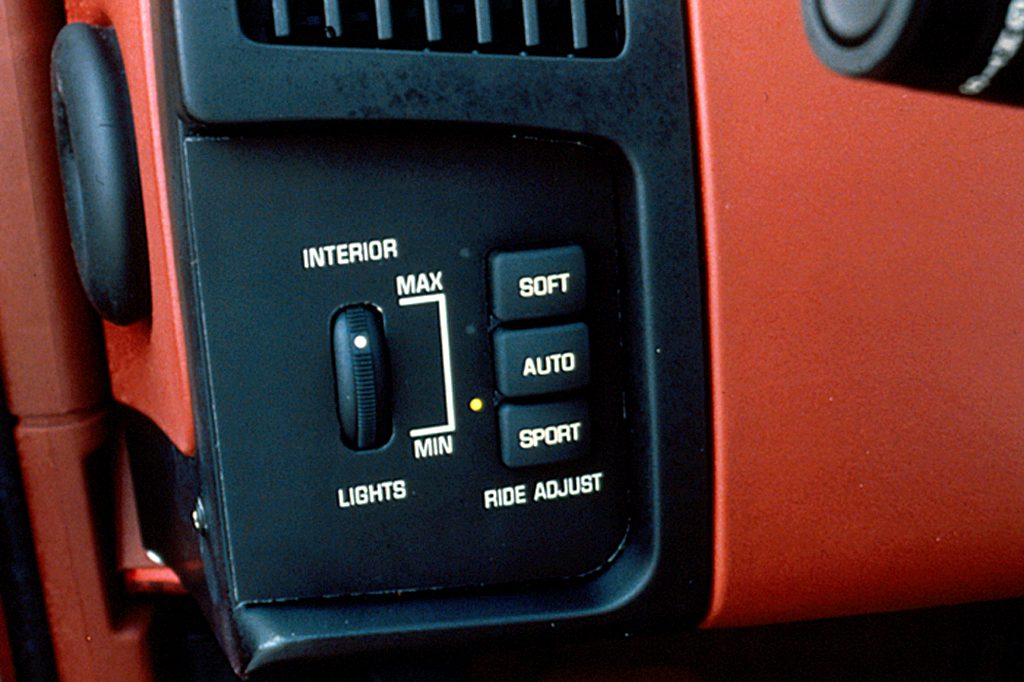
1992 Buick Skylark interior
| Pros: |
|
| Cons: |
|
Riding and handling better than prior Skylarks, this more modern Buick can still be a sensible choice, despite loud engines and poor insulation.
Overview
Buick redesigned its front-drive compact for 1992, with striking “new age” styling. Wheelbase was the same as before, but overall length grew by 9 inches. Oldsmobile’s Achieva and Pontiac’s Grand Am, on the same platform, look totally different. Base and Gran Sport (GS) editions came in 2- and 4-door sedan body styles. Base models got a Quad OHC 2.3-liter 4-cylinder engine; Gran Sports, a 3.3-liter V6. All Skylarks had antilock brakes, power door locks, and a split folding rear seat. Instead of an airbag, Skylarks had GM’s door-mounted front seatbelts, which could be left buckled for automatic deployment.
Yearly Updates
| 1993 Skylark Adjustable Ride Control dropped to an option, as Gran Sports adopted a Gran Touring suspension. A stripped entry-level model joined the line, along with a midlevel Limited–equivalent to the ’92 base model. Gran Sport coupes and sedans again topped the line. The base Quad OHC engine lost 5 horsepower. New features included a child-height anchor for the rear shoulder belt. |
| 1994 Skylark A 3.1-liter V6 replaced the 3.3-liter, as Skylarks added a driver-side airbag and optional 4-speed automatic transmission. |
| 1995 Skylark Skylarks got a new Quad 4 base engine with plenty of zest: 150 horsepower, to be precise. A new tubular rear axle put springs and shock absorbers on the same line as the back wheels. Automatic-transmission fluid now was supposed to last 100,000 miles. |
| 1996 Skylark A passenger-side airbag arrived for 1996, along with toned-down styling and a larger Twin Cam base engine. This latest version gained a new grille, hood, and headlamps, resulting in an appearance more closely related to other Buick models. The dashboard had a more traditional layout than the prior one, which had been criticized for oddly placed gauges and controls. |
| 1997 Skylark Given the extensive modifications made last year, the 1997 Skylark returns with few changes for its final season. |
